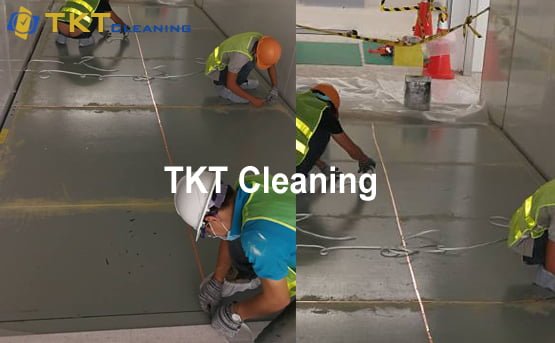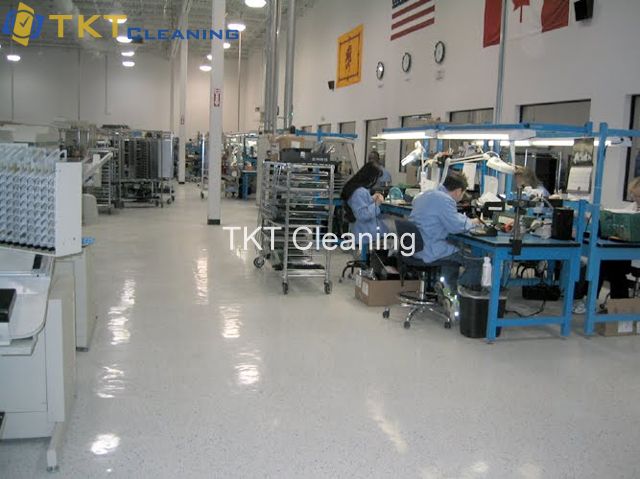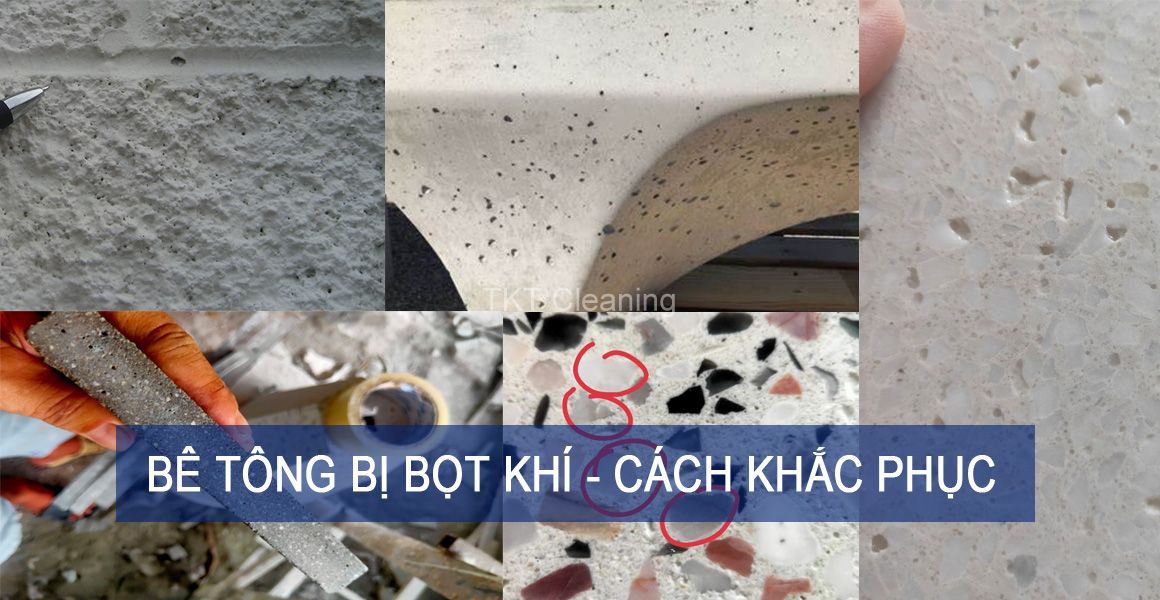TKT Cleaning company continues serial post about “how to kill, remediate, prevent mold at home and office. We offten see mold on drywall, wood, tiles and grout.
The most obvious sign of a mold problem on wall is finding green, brown, orange or even black spots. But there are other, less apparent signs:
- Cracked or peeling paint
- Discoloration
- A recurrent “soot” or black streaks
- Bulging
- A musty, damp smell
- Places Most Prone To Mold
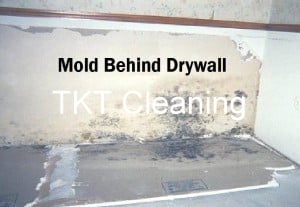
Mold often grows in areas where condensation forms from water vapor in the air meeting a cold surface which turns the vapor into a liquid. This often takes place on exterior walls or in basements.
Very humid areas in the home are prone to mold, too. Bathrooms and laundry rooms are two common places to find mold growing, particularly on grout lines or shower walls. Other areas include the walls and ceiling near humidifiers and any room with a hot tub or jacuzzi improperly installed indoors. In these places, one of the best ways to prevent mold is to decrease humidity by opening windows and running fans regularly.
Mold also grows where there is (or has been) a water leak. Places like the cupboards under sinks are very prone to mold. Once a pipe has leaked, there’s a good chance mold will grow unnoticed within the wall until the problem requires expert removal.
- Drywall
- Wood
- Tiles and grout
You need to remove mold in different ways depending on the material it’s growing on.
1. Mold on Drywall
If you find mold growing on unpainted drywall in your home you will have to remove the drywall and replace it. Unfortunately there is no way to completely remove mold from unpainted drywall since it is a porous material.
How to Remove Moldy Drywall
Use a utility knife to cut out any section of drywall with mold on it. You should make sure to cut out an area that covers at least two of the wooden beams behind the drywall. This is so you’ll be able to properly attach the replacement section of drywall onto the two beams.
Next you’ll need to cut out a section of new drywall to replace the drywall you just removed. Use a tape measure to measure out the length and width of the new section of drywall that you’ll need so that it will fit properly. Then use the utility knife to cut out the section of new drywall.
Make sure that the new drywall fits snugly in place and then use drywall screws to attach it to the wooden beams. After this you should apply joint compound (also called drywall compound or mud) and then leave it to dry. Once you’ve left it for 24 hours you can then sand the joint compound down to smooth it out. You can also then paint the drywall if you like.
It’s a good idea to HEPA vacuum the room as well to remove any mold stirred up during the process.
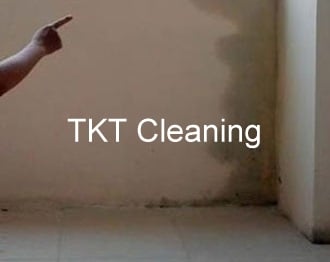
Mold on Painted Drywall
If you find mold on drywall that is painted or primed then the good news is you shouldn’t have to remove the drywall. This is because the mold should be just on the surface and shouldn’t have penetrated into the drywall itself.
Wipe or scrub the mold away using a cleaning product or mold killing solution. You can find some mold killing solutions and directions on how to use them at the Killing Mold page.
2. Mold on Wood
It’s usually safe to keep using moldy wood once you’ve cleaned it up. Although there might be some small amount of mold left below the surface of the wood, it shouldn’t regrow and cause problems provided you keep the moisture in your home to a minimum. If the wood is painted then it’s even better news since the mold probably wouldn’t have penetrated into the surface of the wood.
How to Remove Mold from Wood
To clean moldy wood wipe or scrub the mold from the surface using a sponge, cloth or scrubbing brush, along with some water and detergent, or any other household cleaner. See the Killing Mold page for some effective solutions to remove mold.
You can use a mold killer if you want, such as bleach, although it isn’t necessary as the main goal is just to remove mold from the surface. There are always going to be small amounts of mold and spores in your home anyway, so trying to kill all the mold spores isn’t the aim. Plus dead mold spores are still allergenic.
The same general process for removing mold from wood applies whether the mold is on wooden furniture, wooden walls, wooden beams or any other wood.
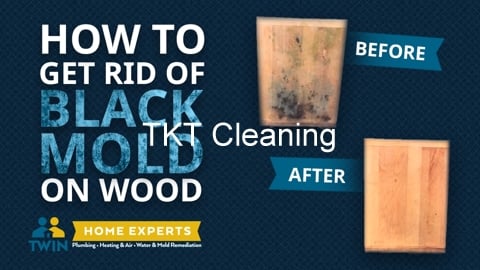
Removing Mold Stains from Wood
Once you’ve cleaned mold growth off wood there might still be a mold stain left behind. Don’t worry, this is just a cosmetic problem and the mold shouldn’t regrow as long as your house doesn’t have any big moisture problems. And if you do get moisture problems then mold will grow in your home whether or not there’s a mold stain left behind anyway.
If you don’t like the look of the stain you can sand the wood if you want. This should usually remove the stain, although sometimes the mold stain might run deep into the wood so that it can’t be completely sanded away.
Another way to get rid of left over mold stains is to use a small amount of bleach to fade it away. This could discolor the wood though so it’s a good idea to do a spot test.
Removing Moldy Wood
Another option of course is to remove and replace wood with mold on it. Usually this is not worth the cost and trouble compared to cleaning, but if it’s a situation where the wood is cheap and easy to replace you might decide it’s the best option.
After Remediating Mold on Wood
You’ll need to HEPA vacuum the surrounding area once you’ve removed the mold from the wood. During mold removal it’s inevitable that some mold spores are stirred up and so you need to remove as many as possible by HEPA vacuuming.
After you’ve finished cleaning up the mold problem you might want to coat the wood with a fungicidal sealant or paint so that you know it’s completely safe. This way any mold left in the wood certainly won’t affect you and no new mold should begin to grow on the wood either.
3. Mold on Tiles and Grout
You’ll often see mold growing on tiles in places like the bathroom. The good news is that mold can easily be cleaned from the non-porous surfaces of tiles.
How to Remove Mold from Tiles and Grout
Begin by scrubbing the mold off of the tiles and grout. You should use a scrubbing brush along with a household cleaning product or mold killing product. There are also commercial tile or grout cleaners you can buy. After this you’ll probably find there is still mold stains left on the grout. You can use bleach to fade these stains away. Before you use the bleach you should spot test it to make sure that it won’t discolor your tiles. You should also wear gloves to protect your hands from the bleach. Apply the bleach to the grout and leave it sit for about 10 minutes. Instead of chlorine bleach you can use hydrogen peroxide if you like, or buy a product like Oxiclean which contains oxygen bleach. If you have a septic system it’s better to use oxygen bleach than chlorine bleach. Another alternative is to use baking soda. Mix it with water to create a paste and then use a toothbrush to scrub it onto the grout. If you find the stain remains on the grout after bleaching then repeat the process. Afterwards rinse the bleach off thoroughly with water. If the stains won’t go away you can try using paper towels soaked in bleach. Saturate paper towels in bleach and then stick them to the grout where there are stains. Give it some time and this should fade away the mold stains on the grout.
The general conclusion on the wall fungicidal Guide as follows:
Prone to rippling walls moldy, the walls were marred due to moisture infiltration causes, create conditions for mold growth. If only intervention by the paint surface, or even re-waterproofing baits will not be able to solve the problem thoroughly. Because only a short time, or after a few rains moisture in the wall will mark new paint stains. You need to check the cause mold to handle. Best to handle both the external borders and the inside of the wall where the mold. After processing precision mold causes the wall to dry waiting for new surface treatment. Attention should not paint the walls when wet weather too much.
With articles fungicide guide on drywall, wood, ceramic tiles TKT cleaning company hope you can take to clean up mold in your home efficiently.









